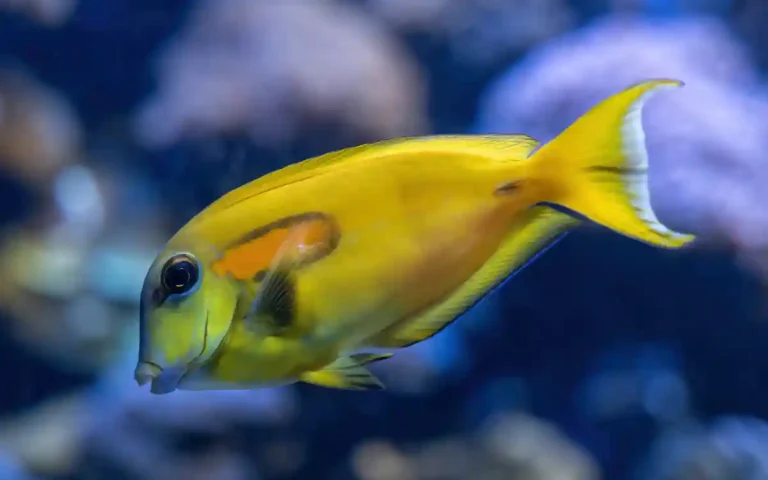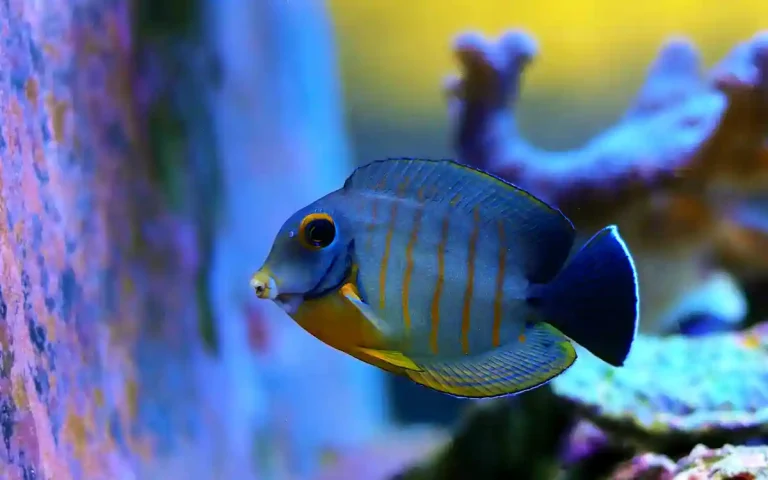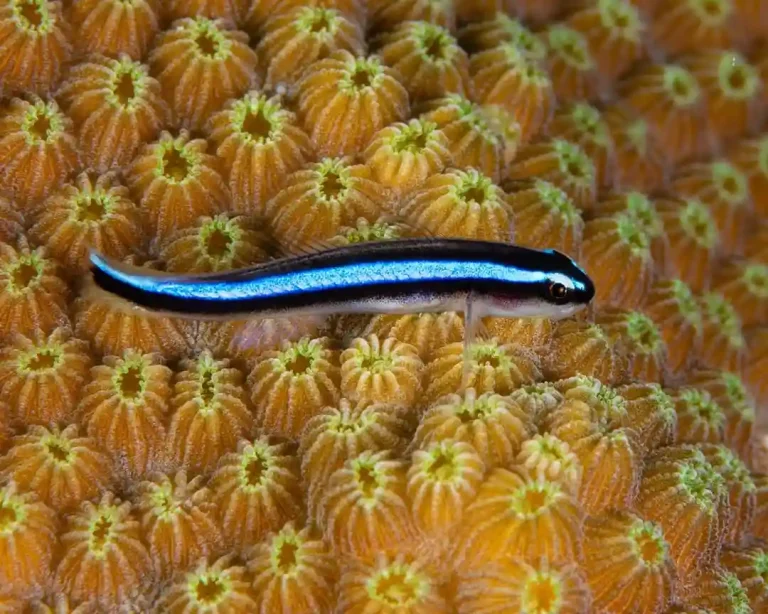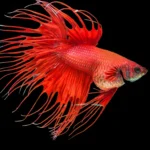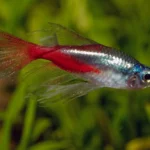The Domino Damsel (Dascyllus trimaculatus), also called the Three-Spot Damsel, is a striking saltwater fish recognized by its deep black body and three bright white spots. It’s one of the hardiest fish in the marine hobby, making it popular among beginners. Active, bold, and full of personality, it can be a great addition to a saltwater aquarium—provided you understand its territorial nature.
This guide covers everything you need to know to keep a Domino Damsel healthy, from choosing the right tank size to managing aggression and picking compatible tank mates.

Species Overview
Domino Damsels grow to about four to five inches long and can live for more than a decade in captivity when cared for properly. They are found in the Indo-Pacific, where they inhabit coral reefs and rocky coastal areas. As juveniles, they display their signature white forehead spot along with two more along the body. These spots may fade as the fish matures, often leaving adults a solid charcoal or black color.
They are semi-aggressive and can hold their own in a tank with other robust fish. While they’re reef-safe in terms of not eating corals, they may harass more timid tank inhabitants.
Tank Requirements
A single Domino Damsel will be comfortable in a 30-gallon tank, though a larger tank of 55 gallons or more is best if you plan to keep multiple fish or create a mixed community. They thrive in water temperatures between 72 and 78°F, with a salinity of 1.020–1.025 and a pH between 8.1 and 8.4. Stable water conditions are essential to keep them stress-free and resistant to disease.
Good filtration is important for maintaining water quality, and a protein skimmer can help keep waste levels low. These fish enjoy moderate to strong water movement, similar to their natural reef environment. When setting up the aquascape, include plenty of live rock with caves and crevices for hiding, while leaving open areas for swimming.
Diet and Feeding
In the wild, Domino Damsels eat a mix of plankton, algae, and small crustaceans. In an aquarium, they accept a wide range of foods, which makes feeding them easy. Offer a mix of frozen mysis shrimp, brine shrimp, and high-quality marine pellets. Adding occasional treats like finely chopped shrimp or squid can provide variety. They also benefit from plant matter, so include spirulina-based foods or seaweed sheets.
Feed them in small portions two to three times a day. Spreading out their meals not only matches their natural feeding behavior but also helps maintain better water quality.
Behavior and Temperament
One of the first things you’ll notice about a Domino Damsel is how active and curious it is. They swim throughout the tank, often inspecting new additions and keeping a close eye on their territory. As they mature, they become more territorial, and males, in particular, will chase away fish that come too close to their chosen spot.
To reduce aggression, it’s best to introduce them into the tank last. Providing plenty of hiding spots and breaking up direct lines of sight will also help. While juveniles are usually peaceful, adults can be persistent in defending their space.
Tank Mates
Choosing the right tank mates is key to keeping the peace. Domino Damsels do well with other semi-aggressive fish such as clownfish, certain wrasses, larger dottybacks, and tangs. These species can handle the Damsel’s boldness without being bullied.
On the other hand, small or timid species like gobies, firefish, and seahorses are likely to be harassed and should be avoided. If you want a peaceful reef display, the Domino Damsel may not be the best choice, but for a mixed community of active fish, they can be a lively addition.
Breeding in Captivity
While breeding is possible in home aquariums, it’s not common. When conditions are right, males will prepare a nesting site and court females. After spawning, the male guards and fans the eggs until they hatch, usually within three to five days. Raising the fry is challenging, as they require tiny live foods and very clean water. If breeding is your goal, set up a dedicated tank to protect eggs and fry from predation.
Common Health Concerns

Domino Damsels are hardy, but they can still fall ill if water quality is poor or if they’re stressed. Marine ich and velvet are the most common issues, both of which can spread quickly. Quarantining new fish before adding them to your display tank is the best prevention. Injuries from territorial disputes can also occur, so watch for torn fins or signs of stress and adjust the tank setup if needed.
Are They Right for You?
If you’re looking for a hardy, beginner-friendly saltwater fish with an active personality, the Domino Damsel is worth considering. They require minimal special care, adapt to a range of conditions, and bring constant movement to the tank. However, they are not the best choice for peaceful community setups and may become aggressive over time.
Final Care Tips
Start with juveniles when possible, as they adapt more easily to new tanks and tank mates. Add them after other fish have settled in to avoid territorial disputes. Keep water parameters stable, feed a varied diet, and provide plenty of rockwork to create a healthy, engaging environment for your fish.

